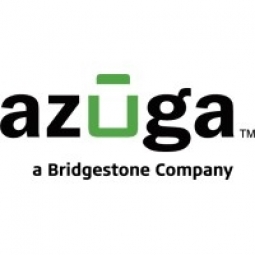下载PDF
Customer Success Story : Whirlpool
适用行业
- 电子产品
适用功能
- 现场服务
用例
- 车队管理
服务
- 系统集成
挑战
Whirlpool Mexico customer service operations needed to better meet its commitments to customers and ensure that the Home Technician team was performing services on time. The customer needed a solution that would better capture what was happening in the field and technician time spent on each service call.
关于客户
The Whirlpool Corporation is a Fortune 500 American multinational manufacturer and marketer of home appliances, headquartered in Michigan, United States. The company has an annual revenue of approximately $21 billion, 100,000 employees, and more than 70 manufacturing and technology research centers around the world. Whirlpool® Mexico’s Home Service Technician division had to cope with challenges like cutting costs, improving workflow efficiencies and increasing customer satisfaction.
解决方案
Whirlpool Mexico implemented Azuga’s plug and play OBDII device throughout its fleet in 2015. As a leading global provider of connected vehicle technology, Azuga has the automotive knowledge to understand the nuances of OBD technology as implemented by vehicle manufacturers across the globe. Immediately following implementation, the company experienced a number of benefits such as ability to measure in real time driver behaviour, vehicle health, fleet optimisation and costs as well as actual versus planned customer visits.
运营影响
数量效益
相关案例.

Case Study
Remote Temperature Monitoring of Perishable Goods Saves Money
RMONI was facing temperature monitoring challenges in a cold chain business. A cold chain must be established and maintained to ensure goods have been properly refrigerated during every step of the process, making temperature monitoring a critical business function. Manual registration practice can be very costly, labor intensive and prone to mistakes.

Case Study
Cloud Solution for Energy Management Platform-Schneider Electric
Schneider Electric required a cloud solution for its energy management platform to manage high computational operations, which were essential for catering to client requirements. As the business involves storage and analysis of huge amounts of data, the company also needed a convenient and scalable storage solution to facilitate operations efficiently.

Case Study
Leveraging the IoT to Gain a Competitive Edge in International Competition
Many large manufacturers in and outside Japan are competing for larger market share in the same space, expecting a growing demand for projectors in the areas of entertainment, which requires glamor and strong visual performance as well as digital signage that can attract people’s attention. “It is becoming more and more difficult to differentiate ourselves with stand-alone hardware products,” says Kazuyuki Kitagawa, Director of Service & Support at Panasonic AVC Networks. “In order for Panasonic to grow market share and overall business, it is essential for us to develop solutions that deliver significant added value.” Panasonic believes projection failure and quality deterioration should never happen. This is what and has driven them to make their projectors IoT-enabled. More specifically, Panasonic has developed a system that collects data from projectors, visualizes detailed operational statuses, and predicts issues and address them before failure occurs. Their projectors are embedded with a variety of sensors that measure power supply, voltage, video input/ output signals, intake/exhaust air temperatures, cooling fan operations, and light bulb operating time. These sensors have been used to make the projector more intelligent, automatically suspending operation when the temperature rises excessively, and automatically switching light bulbs. Although this was a great first step, Panasonic projectors were still not equipped with any capability to send the data over a network.








